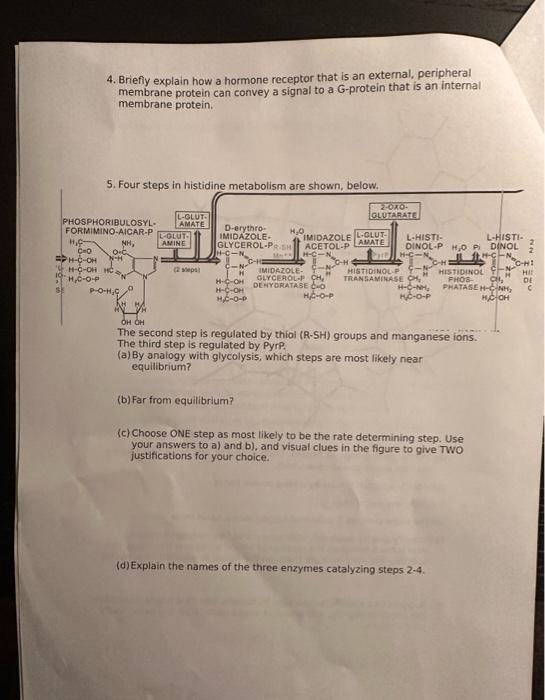Answered step by step
Verified Expert Solution
Question
1 Approved Answer
Answers should directly focus on the questions 4. Briefly explain how a hormone receptor that is an external, peripheral membrane protein can convey a signal
Answers should directly focus on the questions 
4. Briefly explain how a hormone receptor that is an external, peripheral membrane protein can convey a signal to a G-protein that is an internal membrane protein. Ine second step is regulated by thiol (R-SH) groups and manganese ions. The third step is regulated by Pyr?. (a) By analogy with glycolysis, which steps are most likely near equilibrium? (b) Far from equilibrium? (c) Choose ONE step as most likely to be the rate determining step. Use your answers to a) and b), and visual clues in the figure to give TWO fustifications for your choice. (d) Explain the names of the three enzymes catalyzing steps 2-4. 4. Briefly explain how a hormone receptor that is an external, peripheral membrane protein can convey a signal to a G-protein that is an internal membrane protein. Ine second step is regulated by thiol (R-SH) groups and manganese ions. The third step is regulated by Pyr?. (a) By analogy with glycolysis, which steps are most likely near equilibrium? (b) Far from equilibrium? (c) Choose ONE step as most likely to be the rate determining step. Use your answers to a) and b), and visual clues in the figure to give TWO fustifications for your choice. (d) Explain the names of the three enzymes catalyzing steps 2-4 
Step by Step Solution
There are 3 Steps involved in it
Step: 1

Get Instant Access to Expert-Tailored Solutions
See step-by-step solutions with expert insights and AI powered tools for academic success
Step: 2

Step: 3

Ace Your Homework with AI
Get the answers you need in no time with our AI-driven, step-by-step assistance
Get Started


